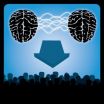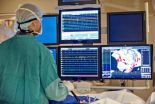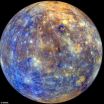(Press-News.org) The shocking news of an Ohio teen who died of a caffeine overdose in May highlighted the potential dangers of the normally well-tolerated and mass-consumed substance. To help prevent serious health problems that can arise from consuming too much caffeine, scientists are reporting progress toward a rapid, at-home test to detect even low levels of the stimulant in most beverages and even breast milk. Their report appears in ACS' Journal of Agricultural and Food Chemistry.
Mani Subramanian and colleagues note that caffeine's popularity as a "pick-me-up" has led to it being added to more than 570 beverages and 150 food products, including gums and jelly beans. It also comes in a pure powder form that consumers can use themselves to spike drinks and food. In small amounts, most people can handle caffeine without a problem. But excessive doses can lead to serious health problems, including insomnia, hallucinations, vitamin deficiency, several types of cancer and in rare cases, death. Subramanian's team wanted to develop a quick and easy way for consumers to determine whether the caffeine levels in their foods and drinks fall within a safe range.
They tested an enzyme called caffeine dehydrogenase and found that it could detect caffeine in a variety of drinks — with the exception of teas — within one minute. Also, it was sensitive enough to pick up on caffeine's presence at concentrations as low as 1 to 5 parts per million, the maximum limit the Food and Drug Administration advises for nursing mothers. They say that their method could be integrated into a dip-stick type of test, like over-the-counter pregnancy tests, that could be used at home.
INFORMATION:
The authors acknowledge funding from the University of Iowa Research Funds.
The American Chemical Society is a nonprofit organization chartered by the U.S. Congress. With more than 161,000 members, ACS is the world's largest scientific society and a global leader in providing access to chemistry-related research through its multiple databases, peer-reviewed journals and scientific conferences. Its main offices are in Washington, D.C., and Columbus, Ohio.
To automatically receive news releases from the American Chemical Society, contact newsroom@acs.org.
Follow us: Twitter Facebook
Toward a home test for detecting potentially dangerous levels of caffeine
2014-07-30
ELSE PRESS RELEASES FROM THIS DATE:
Hope for more accurate diagnosis of memory problems
2014-07-30
More accurate tests could be created to diagnose diseases such as Alzheimer's or memory problems stemming from head injuries, leading to earlier intervention, according to new findings from the University of East Anglia.
The research involved investigating the components of memory using a combination of tests and neuroimaging – a method that could be used to create a diagnostic tool for distinguishing between different types of dementia, memory damage from stroke or forms of amnesia caused by head trauma.
Dr Louis Renoult, a lecturer in UEA's School of Psychology, said: ...
Exploring 3-D printing to make organs for transplants
2014-07-30
Printing whole new organs for transplants sounds like something out of a sci-fi movie, but the real-life budding technology could one day make actual kidneys, livers, hearts and other organs for patients who desperately need them. In the ACS journal Langmuir, scientists are reporting new understanding about the dynamics of 3-D bioprinting that takes them a step closer to realizing their goal of making working tissues and organs on-demand.
Yong Huang and colleagues note that this idea of producing tissues and organs, or biofabricating, has the potential to address the ...
Nature inspires a greener way to make colorful plastics
2014-07-30
Long before humans figured out how to create colors, nature had already perfected the process — think stunning, bright butterfly wings of many different hues, for example. Now scientists are tapping into those secrets to develop a more environmentally friendly way to make colored plastics. Their paper on using structure — or the shapes and architectures of materials — rather than dyes, to produce color appears in the ACS journal Nano Letters.
N. Asger Mortensen, Anders Kristensen and colleagues point out that currently, plastic manufacturers add pigments to their products. ...
Fighting over proposed changes to food labels
2014-07-30
To help Americans make better decisions about what they eat, the Food and Drug Administration (FDA) earlier this year proposed significant changes to the Nutrition Facts label found on nearly every food product in the U.S. An article in Chemical & Engineering News (C&EN), the weekly news magazine of the American Chemical Society, explains the suggested updates — and the fight that has ensued.
Britt Erickson, a senior editor at C&EN, points out that while the Nutrition Facts label has remained largely the same for two decades, nutrition science has not — and neither have ...
Brainwaves can predict audience reaction
2014-07-30
Media and marketing experts have long sought a reliable method of forecasting responses from the general population to future products and messages. According to a study conducted at The City College of New York, it appears that the brain responses of just a few individuals are a remarkably strong predictor.
By analyzing the brainwaves of 16 individuals as they watched mainstream television content, researchers were able to accurately predict the preferences of large TV audiences, up to 90 % in the case of Super Bowl commercials. The findings appear in a paper entitled, ...
Brazilian researchers identify RNA that regulates cell death
2014-07-30
Researchers from the University of São Paulo (USP) have identified an RNA known as INXS that, although containing no instructions for the production of a protein, modulates the action of an important gene in the process of apoptosis, or programmed cell death.
According to Sergio Verjovski-Almeida, professor at the USP Chemistry Institute and coordinator of a research funded by São Paulo Research Foundation (FAPESP), INXS expression is generally diminished in cancer cells, and methods that are capable of stimulating the production of this non-coding RNA can be used to ...
Scientists caution against exploitation of deep ocean
2014-07-30
CORVALLIS, Ore. – The world's oceans are vast and deep, yet rapidly advancing technology and the quest for extracting resources from previously unreachable depths is beginning to put the deep seas on the cusp of peril, an international team of scientists warned this week.
In an analysis in Biogeosciences, which is published by the European Geosciences Union, the researchers outline "services" or benefits provided by the deep ocean to society. Yet using these services, now and in the future, is likely to make a significant impact on that habitat and what it ultimately ...
Ablation increases survival for adults with atrial fibrillation
2014-07-30
Ann Arbor, Mich. -- Adults who undergo a minimally invasive technique to treat atrial fibrillation are significantly less likely to die from a heart attack or heart failure, according to a long-term study by the University of Michigan Frankel Cardiovascular Center.
More than 4 million people have atrial fibrillation, an age-related heart rhythm disorder that can cause a fluttering sensation in the chest and impair the heart's ability to pump blood.
The study published in Heart Rhythm shows cardiovascular mortality dropped by 60 percent among adults who had their normal ...
Mercury's magnetic field tells scientists how its interior is different from Earth's
2014-07-30
Earth and Mercury are both rocky planets with iron cores, but Mercury's interior differs from Earth's in a way that explains why the planet has such a bizarre magnetic field, UCLA planetary physicists and colleagues report.
Measurements from NASA's Messenger spacecraft have revealed that Mercury's magnetic field is approximately three times stronger at its northern hemisphere than its southern one. In the current research, scientists led by Hao Cao, a UCLA postdoctoral scholar working in the laboratory of Christopher T. Russell, created a model to show how the dynamics ...
Differential gene expression in proximal and distal nerve segments after sciatic nerve injury
2014-07-30
Wallerian degeneration is a subject of major interest in neuroscience. A large number of genes are differentially regulated during the distinct stages of Wallerian degeneration: transcription factor activation, immune response, myelin cell differentiation and dedifferentiation. Although gene expression responses in the distal segment of the sciatic nerve after peripheral nerve injury are known, differences in gene expression between the proximal and distal segments remain unclear. Dr. Dengbing Yao and co-workers from Nantong University, China used microarrays to analyze ...


